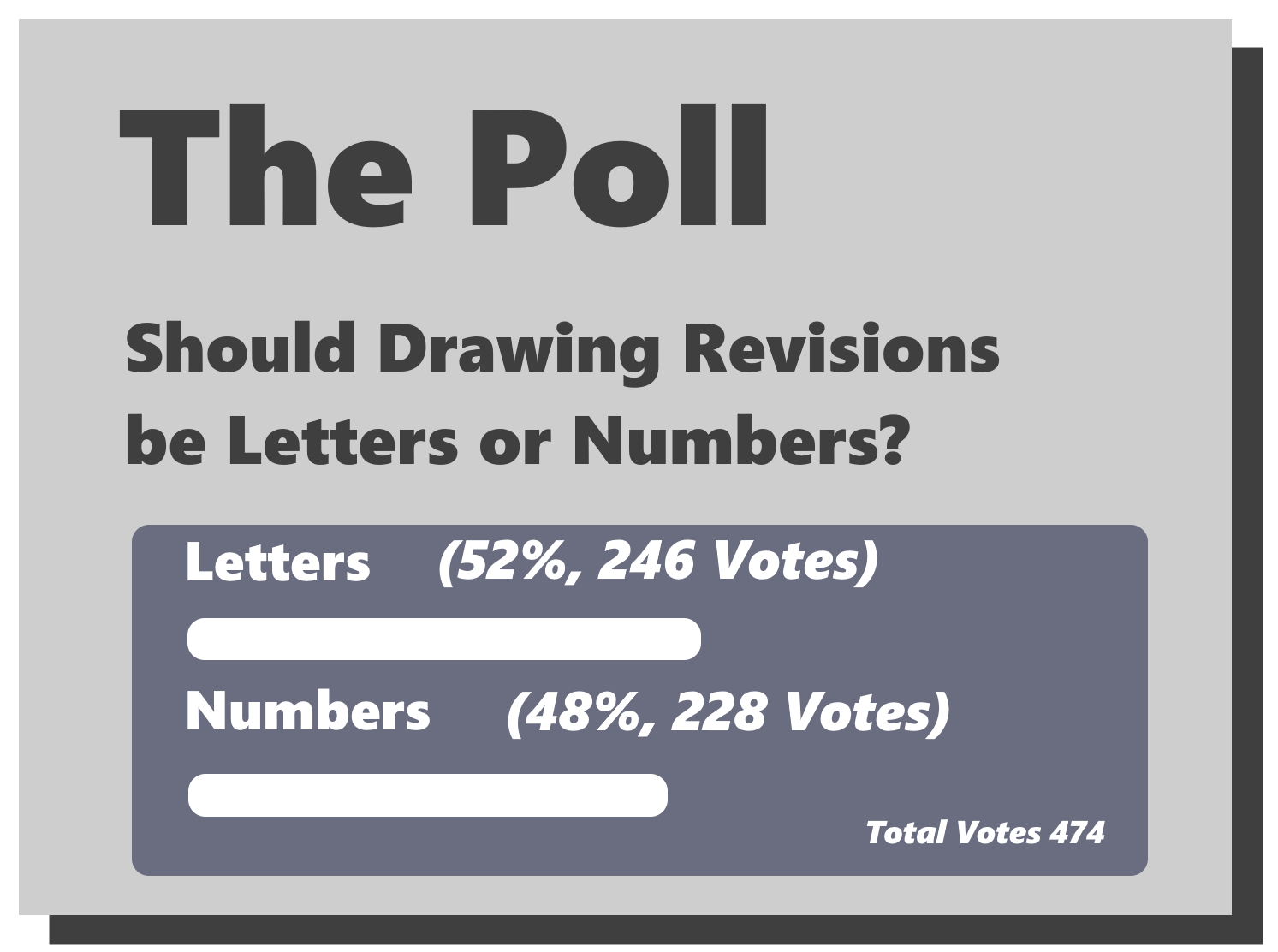Configuration management is one of the highest priorities in a project. Utilizing a revision system helps keep electronic versions organized. Defense and aerospace customers typically always expect documentation to be associated with their delivered system, and those documents must reflect the correct configuration of the delivered system. Revision systems may be devised in many different ways of distinguishing different versions. In software, versions are numbered by “major, minor, alpha, beta and build number” but in engineering there is usually one revision number.

Engineering revision schemes will either be numerical increments, or alphabetical increments. Since there are two typical ways to revision engineering documents, which one would be better? A continuing poll by Solid Smack asked its users “Should Drawing Revisions Be Letters or Numbers?” Though the votes are not from a valid statistical sample, the results of this poll show they are not statistically different (p=.390).
Since engineering revision schemes cover many industries, there are often many ways of doing the same thing, but each has their place. When designing a revision scheme it is important to consider how the revision is stored in the system, how it is retrieved, how it is assigned, if a company global standard can be used, and what implications it may have if it were ever changed.
Revisions stored on drawings are best tracked with an alphabetical character if the part is using a numerical part number, such as “A, B, … ,Z”. The alpha character is very distinguishable from the number and has a higher chance of not getting associated with the part number. This system works great when there are less than 26 revisions for each part. When there are more than 26, the alpha character revision increments to “AA, AB, … , ZZ” which is less aesthetically easy to deal with, and within a PDM system, may or may not be difficult to administrate. However, a revision of a part should only be made when the form, fit, or function of the design is not changed. Revision changes include the addition of notes, clerical edits, or changes in the general drawing layout. A new part number should be created when changing the form, fit, or function. This should keep the limit of revisions under 26.
Software is a different matter. Typically small revisions are “build” versions. Software can be as small as an embedded program with a few lines on a chip with minimal memory. Constraints in software size may yield to the necessity of using a numerical revision. To know the software version, binary must be translated to base-10, which is much easier than to translate to alpha characters.
When determining a revision scheme, you must think of all of the ways it’s tracked, from small to big items, from documents to software to engineering drawings, from file folders and PDM to ERP systems. Don’t constrain yourself by the limited method of assigning a revision scheme. Flexibility should be expected.